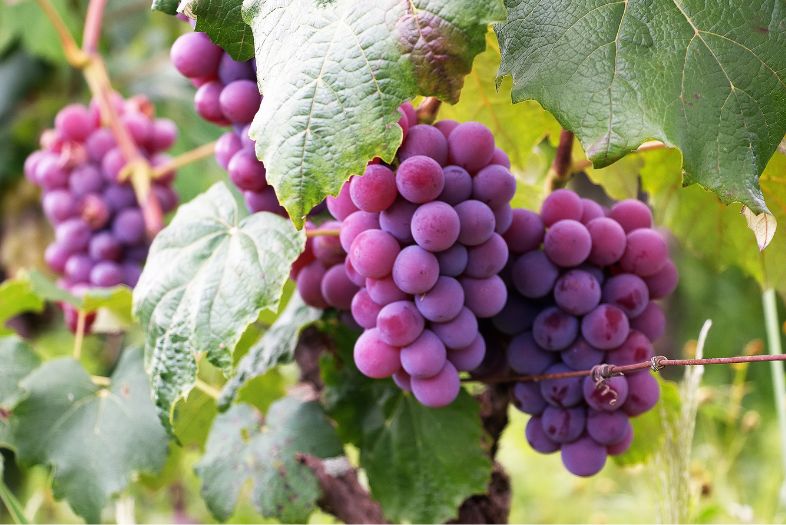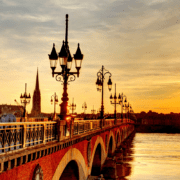
The Saint-Émilion grape: the heart of Bordeaux wines
Saint-Émilion grapes and wine have been part of its history since time immemorial. Long before Emilion, an ancient Breton monk, settled on a cliff and gradually dug out a hermitage in the 8th century. By then, vineyards had already existed for a long time.
Taking a free tour of Saint Emilion will give you the chance to learn first-hand about this fascinating history. According to some archives, it is believed that it was the Romans who planted the first vines around the 2nd century. This is just to give you an idea of the importance of wine for the region and the French economy in general.
More than two millennia of tradition
Yes, the Saint Emilion grape has been part of the landscape for more than two millennia. However, it is important to note that it is in recent times that we have seen the greatest growth in the industry. In part, thanks to new generations taking over the reins of family farms, as well as investment in technology to improve processes.
Hence, wine tasting in Saint Emilion is an increasingly popular plan among those who come to the city. You can find this type of activity practically every day of the week. You should also take into account the number of wineries in the area, where you have plenty to choose from.
In 1995, the Saint Emilion grape appellation was created to protect the quality and guarantee the exclusivity of these wines. It is reviewed every 10 years, allowing the grapes to move up or down in the ranking. This is why the winemakers in the area strive to keep their productions up to date, combining tradition with modern technology.
The Appellations d’Origine Contrôlée (AOC) are divided into several levels. The most renowned is the Saint-Émilion Grand Cru, ending with the Premiers Grands Crus Classés A, but also of a very high standard. Among these exclusive groups, some world-renowned names stand out, such as:
- Château Ausone
- Château Cheval Blanc
- Château Pavie
These, we could say, represent the excellence and oenological mastery that has forged the reputation of this region for so many centuries.
If you want to taste possibly the best in France, at any time of the year, Saint Emilion is worth a visit. Whether you come on a day trip from Bordeaux or take a few days to discover all the charms this medieval village has to offer.
Among some things you should know before tasting Bordeaux wines, is that they are mainly made from two varieties of grapes: Cabernet Sauvignon and Merlot. Others such as Malbec, Cabernet Franc and Petit Verdot are also used, but in smaller quantities. These combinations are partly what make these wines unique and so highly valued.
Vineyards to get lost in
Being in one of the best wine-producing areas in the world, there are many vineyards that you will be able to visit. The winemakers in the area have opened up to tourists and adapted their wineries to welcome them and serve them in the best possible way.
Among the best vineyards in Bordeaux that you will be able to visit are the following:
Château Smith Haut Lafitte
It has an extension of 87 hectares and is developed in Martillac, a kind of green island with such exceptional soil characteristics that give unique attributes to its grapes. They produce six different types of red and white wines.
Château de Sales
It is located in the Pomerol appellation, with more than 90 hectares of land, 47 of which are dedicated to the cultivation of Saint Emilion grapes. Moreover, the Château de Sales is considered as a historical monument, so the mere fact of visiting it is a unique and enchanting experience.
Château Pape Clément
It is set in a castle that looks like something out of a fairy tale. They produce a variety of six wines, red and white.
Main varieties
Saint – Émilion stands out for its rich variety of grapes. Among the most relevant grape varieties that can be found in this area, Merlot and Cabernet Franc stand out.
- Merlot has a very fruity flavour and a soft character. This is why it is the main Saint Emilion grape to be planted, obtaining wines with notes of ripe fruit and body.
- Cabernet Franc, on the other hand, stands out for its herbaceous touches and elegant notes that allow us to obtain wines with complexity and structure.
Harvesting in Saint-Emilion takes place between September and October. This is the time when the grapes reach their optimum ripeness, allowing us to take advantage of their more subtle aromas and flavours, ready to be transformed into these precious wines.
Wine tourism destination
Saint-Émilion attracts winemakers, wine lovers and tourists alike during any season of the year. In addition to the palate, many are attracted by its enchanting landscape and of course, its rich and long winemaking history.
Over the years, various historians have established that the greatest treasure this land holds is precisely in its soils and the diversity of the land. This, coupled with the art of viticulture that has been passed down through the generations, has made this region a true paradise for wine lovers.
Saint – Émilion is a charming and particularly tourist-friendly destination. Here, its inhabitants and producers in general work together to make you feel welcome and want to come back again and again.
If you are considering indulging all your senses on your next holiday, this is a place to consider. Whether it’s for romance, with friends or solo adventure, Saint-Emilion is a destination to suit everyone.



